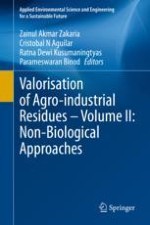The world’s population is expected to reach the eight billion mark very soon. As a result, there is a need for increased industrial and agricultural production to ensure human wellbeing. This in turn generates huge amounts of waste. Current waste treatment solutions are effective, but usually require huge capital investment, are labour intensive and potentially lead to hazardous by-products.
This book presents the latest non-biological approaches to address issues related to the abundance of waste, offering insights into best practices in various regions around the globe. It highlights techniques such as chemical extraction, pyrolysis and ultrasonics, and a number of chapters include individual case studies to further enhance readers’ understanding. This comprehensive reference resource is intended for graduate students, researchers and scientists, and is also a valuable addition to all agriculture and biotechnology libraries.
